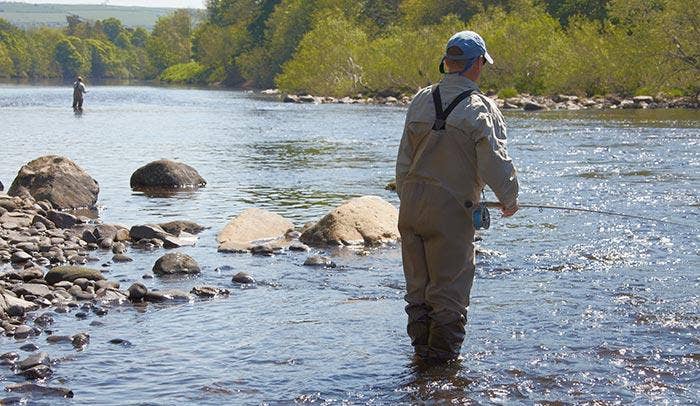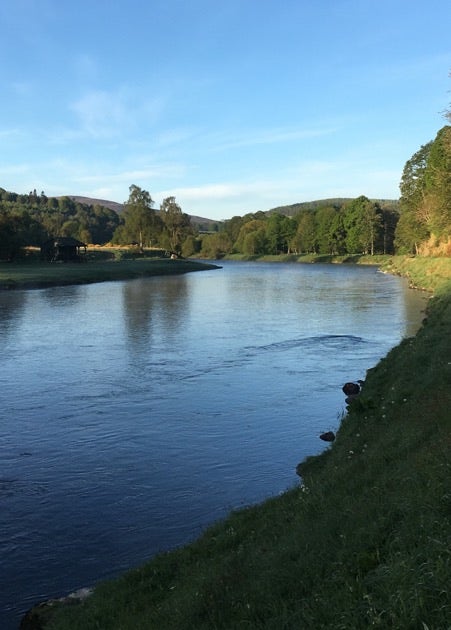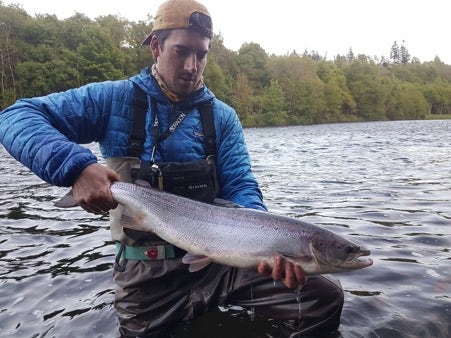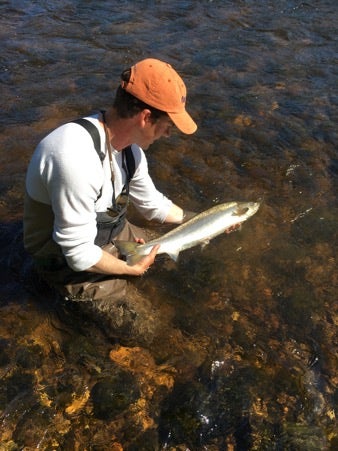Low water and roasting temperatures have defined the 2018 salmon fishing season so far, not just here in the UK but also further afield. As I write, many Norwegian rivers are struggling for water and the temperature on Russia’s Kola Peninsula is nudging 30C! The weather may be beyond our control, but there are some tactics we can try to make the most of the difficult hand we have been dealt.
Jonny's Guide to Low Water Salmon Fishing
Consider a Change of Schedule
It’s easy to fall into the traditional fishing schedule of 9am to 1pm and 2pm to 6pm, separated by an hour’s lunch break. With typical temperatures and a bit of cloud cover there’s nothing wrong with this approach. However, when faced with bright sun, high water temperatures and low water, a change of schedule can make a big difference to your chances.Both this season and last, my May week on the River Spey was the victim of wall-to-wall sunshine and low water conditions. This year my week was sadly unfruitful, a couple of fish were lost but no salmon graced the net despite our best efforts. However, I think back to my trip last year when I landed three salmon for my three days’ fishing in similarly tough conditions. I managed a fish each day, all of them deciding to grab my fly between the hours of 9pm and 10pm, in pools that had been covered by all manner of methods during the middle of the day.
This won’t come as a surprise to many of you reading, but if you find yourself stuck in the old routine, perhaps it’s time to re-think the structure of your fishing day. As long as your beat allows it, consider fishing from just after sunrise to late morning, take a siesta (after all, we’ve got the weather for it!) and then fish from late afternoon until dark. It’s tempting to thrash the pools all day in the hope of encountering a taking fish, but you will almost certainly find far more activity in these two key periods. Conserve your energy and consider resting pools during the day. If the prospect of an early start and late finish fills you with dread, choose just one of these sessions. I prefer the evening session as conditions are always improving as you fish, with temperatures and light levels both falling. Compare this to the morning session which can quickly turn into a race against the rising sun.
Stealth Tactics
Why is it that we’re accustomed to approaching a chalkstream with extreme stealth, yet many of us stride and splash into a salmon pool without a second thought? In adverse conditions it doesn’t hurt to enter the pool nice and quietly. This goes for casting too, try to keep splashing to a minimum. Consider your salmon fishing tackle - put the Double-Spey and Snap-T back in the drawer and try to limit yourself to a Single-Spey or Snake Roll. Sound travels easily underwater and minimising disturbance on the water’s surface can only help your cause.Look for Streamy Water
Whenever temperatures increase, I always look for faster, better oxygenated water. You’ll most likely see resident fish rolling around in the slacker, deeper pools, but fresh taking fish can often be found in these more inconspicuous spots. Start a few yards higher up than you normally would in the neck of the pool, looking for small glides and holding spots mixed in with the white water. You may be surprised which seemingly innocuous spots may hold a taking fish. Similarly, at the tail of the pool, allow your fly to fish a little further down than you normally would. Fish will sometimes lie right on the cusp where the water starts to speed up and run out from the pool. Now is also a great time to explore areas between pools that may not otherwise fish in higher water. Just because the pool has no name, and no one has caught a fish there for several decades doesn’t mean you shouldn’t give it a go! Think like a fish and look for small pockets of water that may provide some respite from the sun.Fly Choice – Think ‘Slim’
Accepted wisdom dictates that we should drop down our fly size in low water and this is certainly a good rule of thumb. As well as overall size, I would also add ‘think slim’. Choose fly patterns that are sparsely dressed, with swept-back hackles and slim tails. With reduced speed and flow in the river, fishing a skinny pattern will still enable some enticing action to be imparted into the fly.If you’re lucky enough to have a bit of cloud cover, it’s well worth trying a hitch or skated Sunray Shadow, experimenting with different retrieve speeds. Smaller flies are a good starting point, but it’s always worth covering the likely looking lies with a big Sunray before moving onto the next pool.
 Keep them wet and unhook your fish in the shallows. This Tay fish was holing in a lie at the tail of a pool, right where the glide meets the white water
Keep them wet and unhook your fish in the shallows. This Tay fish was holing in a lie at the tail of a pool, right where the glide meets the white waterI also like to use a Rapala-knot in these conditions rather than the usual double-turle, which I think helps to create a little more movement in the fly. I’m not sure how much of a difference it truly makes, but confidence in your approach counts for a lot in salmon fishing!





